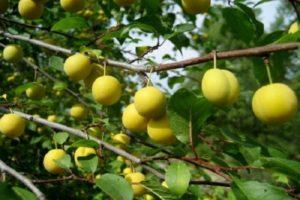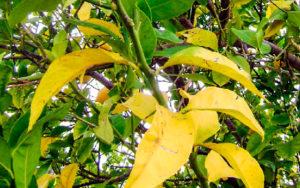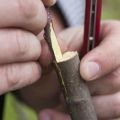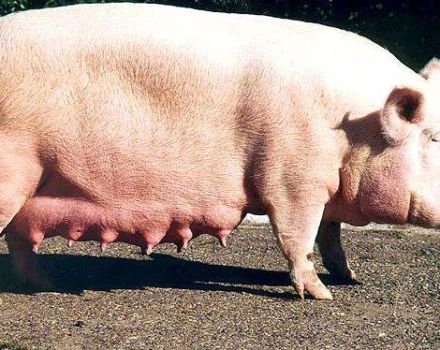When and how best to transplant a plum to a new place - in autumn or spring
There are various reasons when it is necessary to transplant plums on the site or to bring them for this from another place, but the necessary processes change only depending on the age of the useful tree. Despite the plant's ability to live in variable climatic conditions, plum transplanting is a delicate and responsible business. The tree does not perceive such transformations well and tolerates them painfully, so you need to act carefully and carefully.
Why is it necessary to transplant a plum
Experienced gardeners are well aware of the addictions of the fruit tree and try to resort to replanting plums in extreme cases. The most common option for transplanting plums to new locations is to move from the nursery after purchase. To the variety of fruit tree species - the main argument for planting, no less significant advantages are always added:
- the need for minimal care;
- immunity to pests (common in other plants);
- unpretentiousness to fertilizing and soil.
With practical experience, site planning is carried out in advance. At the same time, they try to take into account the characteristics of each culture, its requirements for humidity and illumination. If the soil is acidic on the site, it will certainly be corrected, because the plum does not like either high humidity or high acidity. In this case, there is rarely a need to transport any fruit variety. There are several common reasons for a plum transplant:
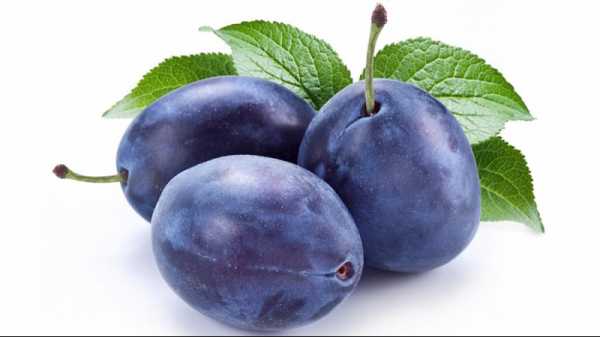
- poorly chosen location of the plum, in which there is no possibility of pollination, or the requirements for lighting and humidity are not taken into account;
- transfer of a fruit crop from another place (from an abandoned plot, nursery, from neighbors who did not need a plum, from root growth, in order to reproduce a successful variety);
- planned construction, when there is no other option for placing the necessary building;
- demolition of the house and the desire to preserve certain species when moving to a new place of residence with an unfilled land plot.
This usually occurs at an age when the seedling's adaptive capacity is high enough, but even after transplanting in this period, difficulties often arise in caring for the tree after the procedure. The plum retains its unpretentiousness and immunity throughout its life.

Which tree needs replanting
Sometimes objective reasons arise - the tree has not had any harvest for several years.This is due to improper planting or placement of the seedling. The need for cross-pollination suggests that other varieties of plum, cherry plum, or at least cherry are nearby. The latter option is not very desirable due to the possible mismatch of flowering dates.
It happens that a tree does not receive the necessary illumination due to an unsuccessfully chosen location, construction of a building by neighbors, or the rapid growth of nearby fruit crops (a common mistake is planting a nut, which not only grows faster, but also has a peculiar effect on crops located nearby).

Sometimes, when delimiting the sections, it turns out that the drain is located on the line of the fence. The neighbors have complaints about non-observance of the distance norm, shading of the beds with a tree. The reason for transplanting a plum can even be an extension in the front garden of an apartment building in which a plum is planted that is not designed for such transformations.
In this case, a good owner will try to save the tree, and an indifferent man in the street will simply cut it down without hesitation. In any case, tree transplanting is a responsible process, for the success of which you need to be careful, the optimal planting time and thorough preparation. You can try to transplant any tree.
But success is guaranteed if it is one-year-old, it is doubtful, but possible if the tree is up to 5 years old, and then there is a minimum of chances even with the most careful care and compliance with all conditions.
Timing
You can try to transplant plums in the spring immediately after the soil warms up, but until the moment when intense warming occurs, and the tree will be forced to develop, without having time to root properly, or gain enough strength and energy:
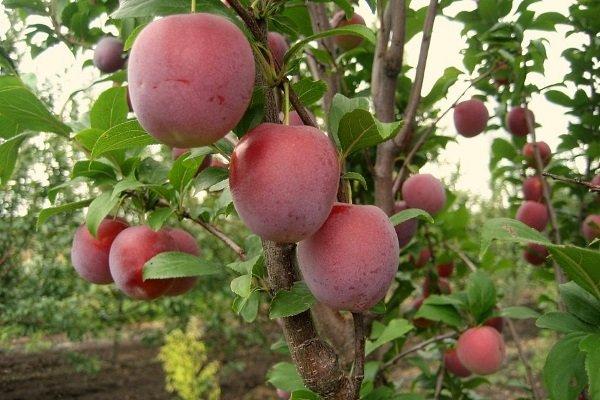
- There are more prerequisites for the success of spring transplants. If the snow has already melted and the soil has managed to warm up, but the juices have not yet begun to move, the buds have not swollen, there is every chance for the rooting and successful adaptation of the plum in a new place. Over the summer and autumn, she will have time to accumulate enough strength to give a harvest the next year.
- To correctly transplant in the fall, you need not wait for the first autumn frosts, but start the process immediately after the leaves fall.
- At any other time, the success rate is minimal, even if you tackle it in advance and follow all the instructions.
The practice of transplanting plums has been developed for a long time, because it was grown by the ancient Egyptians. But both the plum and any other fruit tree will take some time to adapt.
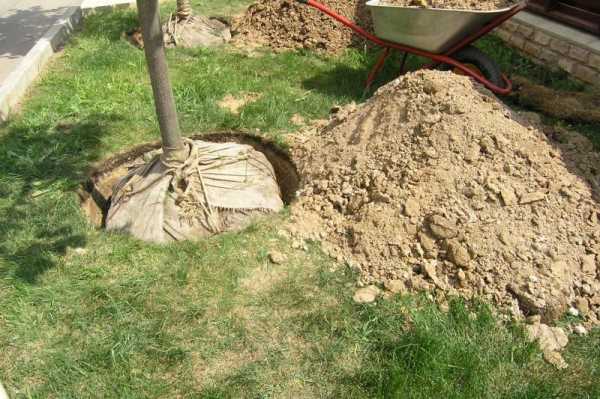
When is it better to transplant: in autumn or spring?
The best time to move trees from their homes is spring. They resort to autumn tree transplants when absolutely necessary, when there is no other way out. The probability of sudden freezing is too great. But spring is also a loose concept for different climatic regions. If April is considered optimal in the middle lane, then in the South it may be the end of March, and in Siberia and the Urals, the transplant is carried out in May, after the end of the frost.
If the variety is winter-hardy, theoretically you can take a risk immediately after the snow melts.
Transplant technology
The transplant technology in autumn is almost the same as in spring. In any case, the pit is being prepared before winter, in October. The only difference is that after a late transplant, the tree is mulched, and in cold climates it is sheltered from freezing after transplantation.

The location of the tree on the site
The optimal location of the tree is on the sunny side, with a maximum of heat and light. If possible - on a hill, because the plum does not like dampness and reacts poorly to nearby groundwater.
The soil should be light, preferably loamy.If the site is heavy and clayey, you will have to add peat and sand, and if it is sandy, you will certainly add clay and compost.
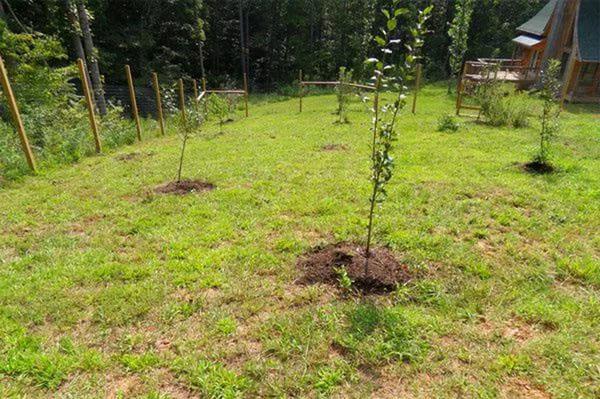
Preparing a place for planting plums
A hole in the ground is dug in the fall, and in the spring - at least 3 weeks before the start of the process. The best option in terms of distance from the edges is considered to be all-round distance, equal to the width of the earthen coma on the root system. If the plum was transported from afar, then the diameter of the pit is determined by the longest roots.
Several buckets of water are poured into the dug hole, drainage is poured (usually fragments of brick or expanded clay, but gravel is possible). Then fertilizers (wood ash, humus or compost) are applied, which are poured onto the soil layer so that they do not burn the injured roots. The removed top sod is laid aside and can be used in spring instead of mulch.
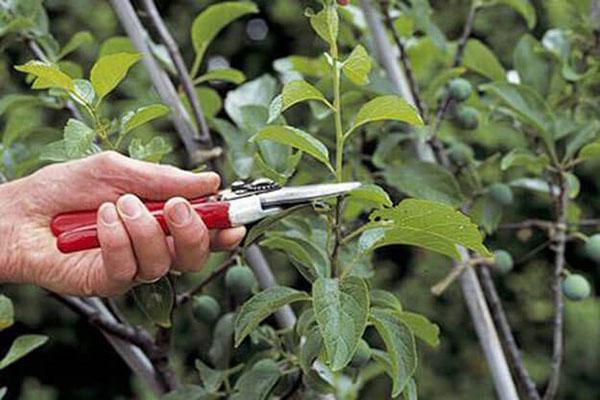
Preparing a tree for planting
In order not to damage the roots, the trunk is dug in at a distance of 70-80 cm (this depends on the age of the plum), after pouring more water under it, so that extraction from the soil passes without difficulty. The digging depth should not be less than 70 cm.
If roots are often found under the shovel, it is better to slightly increase the diameter of the excavated circle.
Work instructions
Having placed the tree in a hole, they cover it with soil so that the root collar is not covered with earth, but rises above the ground. As the groove is filled, the soil is tamped and watered. The deeper the hole, the more carefully it must be trampled down so that there are no air bubbles, and it subsequently does not sink. After planting is complete, peat or sawdust should be used in the trunk circle to avoid moisture loss. If it is a seedling, it is tied to a peg buried along with the tree.

How to care for a plum so that it takes root
Proper care at the initial stage is the correct choice of location and preparation of the pit for planting. For about a year, the plum is enough of what is placed in it, but already in the second year it is necessary to take care of fertilizers. Pruning is also best done after signs of final rooting appear. For good rooting, the first time you need to loosen the soil in the root zone, make sure that the crust does not sinter on it.

The tree perfectly tolerates the features of a cold climate, consistently gives a good harvest and has a lot of other useful qualities. But plums rarely positively perceive moving from place to place, they recover for a long time, they refuse to harvest for several years.
